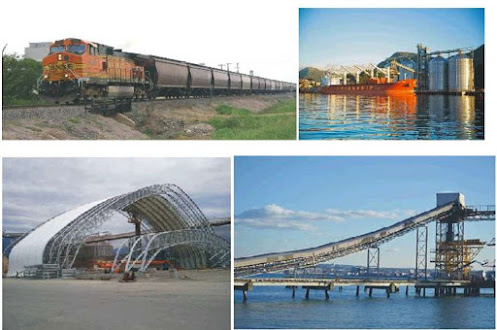There are so many types of plants this legumiceae, ie more than 19,000 species and should be selected which are most suitable according to the characteristics of the area and the specific objectives to be achieved. When the plants grown in dead soil, leguminocea plants then with the rain water will grow and further bind nitrogen (N) from the air and stored in a nitrogen nodules of these plants that enrich the soil as it becomes fertilizer. Calliandra is just one example of the Leguminoceae plants. When soil was broken even been dying to be repaired and able to produce 5F (Fuel, Food, Fodder, Fiber and Fertilizer) above, the calliandra could be one option. Calliandra crop rotation is fast, ie within one year can be harvested and can grow from the its shoots up for decades so it does not need to be replanted every year.
Calliandra cropping pattern that is generally 1 x 1m, so that enough space including for sheep grazing, or type of pasture are precision grazing. Land to pasture, the sheep in the calliandra plantation insulated to a certain extent depend on topography factors , roads access, woods harvest rotation system and the best grazing radius. For thousands of hectares of land could be made a lot of posts or units to take the sheep grazing. The above pattern will make the soil or land becomes very productive, and certainly if there are many people who do well then crises will be inevitable human needs, let alone there are millions of hectares of land or land in Indonesia abandoned. Sheep as well as the cows will be marketed to those in need both domestically and abroad. Saudi Arabia for example require 8 million sheep, and ¼ of its needs in the Hajj season. Besides freighter sheep graziers will come to them when they are able to provide 20,000 head each delivery (shipment).
So how after the soil fertile? Of course it could be used for a variety of trees more profitable as fruit trees and so forth. Calliandra trees can be harvested well for more than 20 years in every year and without the need for replanting every year. We take 15 years for example, then during the same line with lifetime machines of wood pellet plant in general. Thus practically at that time continued to productive land with a variety of crops with good management and sustainable. If after that too continue with calliandra tress to be used also the result will be the maximum that's because the good management. Calliandra plants is a pioneer or pioneer plant species so it is suitable for soil improvement that damaged or die.
That Muslims should also syirkah (cooperation) in the management of land (grassland or sources of food, water and fire (energy source), it is clear the the direction of the Prophet Muhammad: "The Muslims were syirkah (cooperation) in three ways, in terms of pasture, water and fire "(HR. Sunan Abu Daud). Water management is always in need of land, the trees need land for a place to grow so that it can help absorb water, water source (spring) emergence of surface soil, then to be able to manage our water must also have access to land management. What are the consequences if we do not want syirkah (cooperation)? Sources of livelihood are our primary form of food, water and energy will be managed by others and people become dependent on the fulfillment of the primary needs. When we are not self-sufficient in terms of basic needs, we can easily be misled in a variety of other matters..
























































